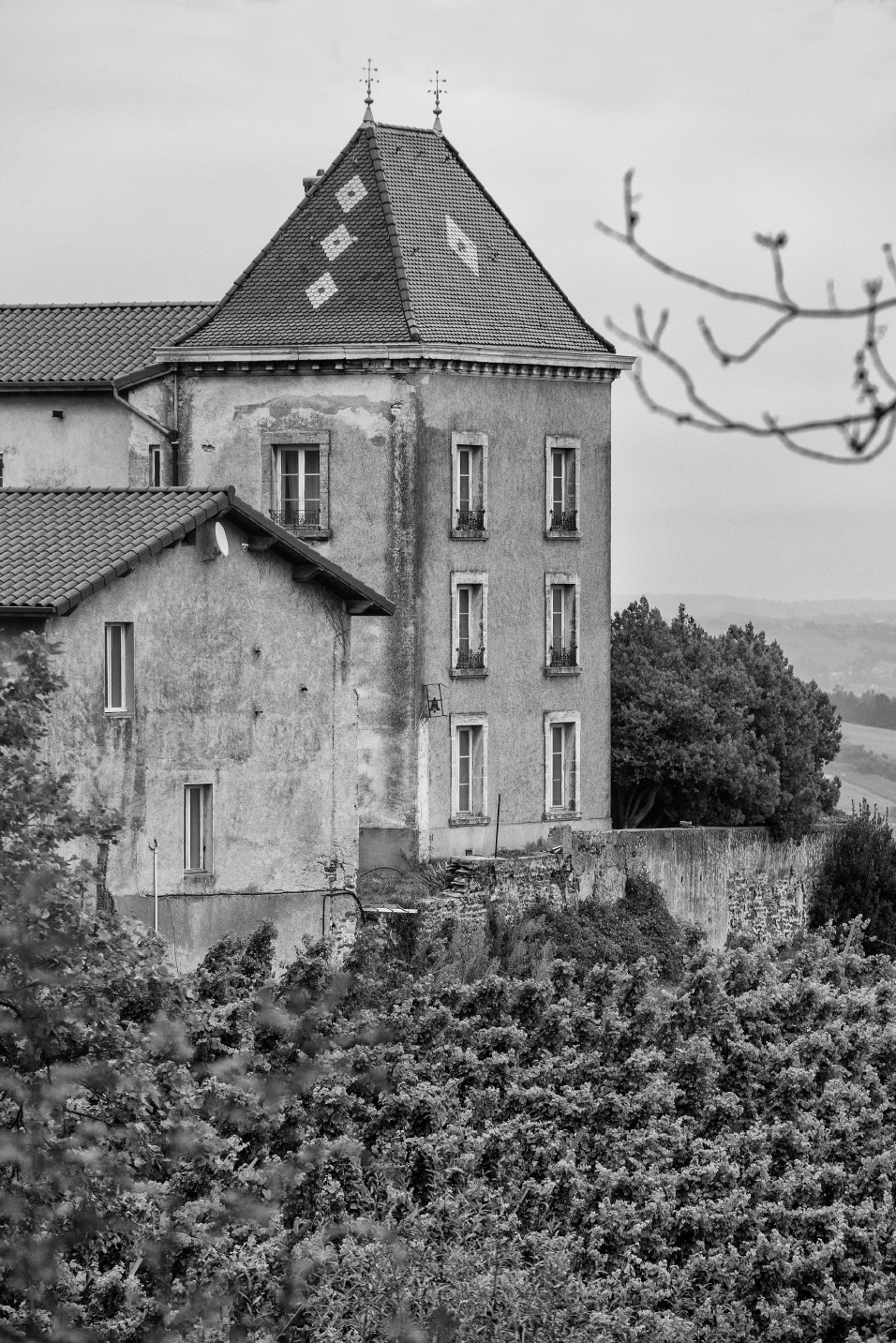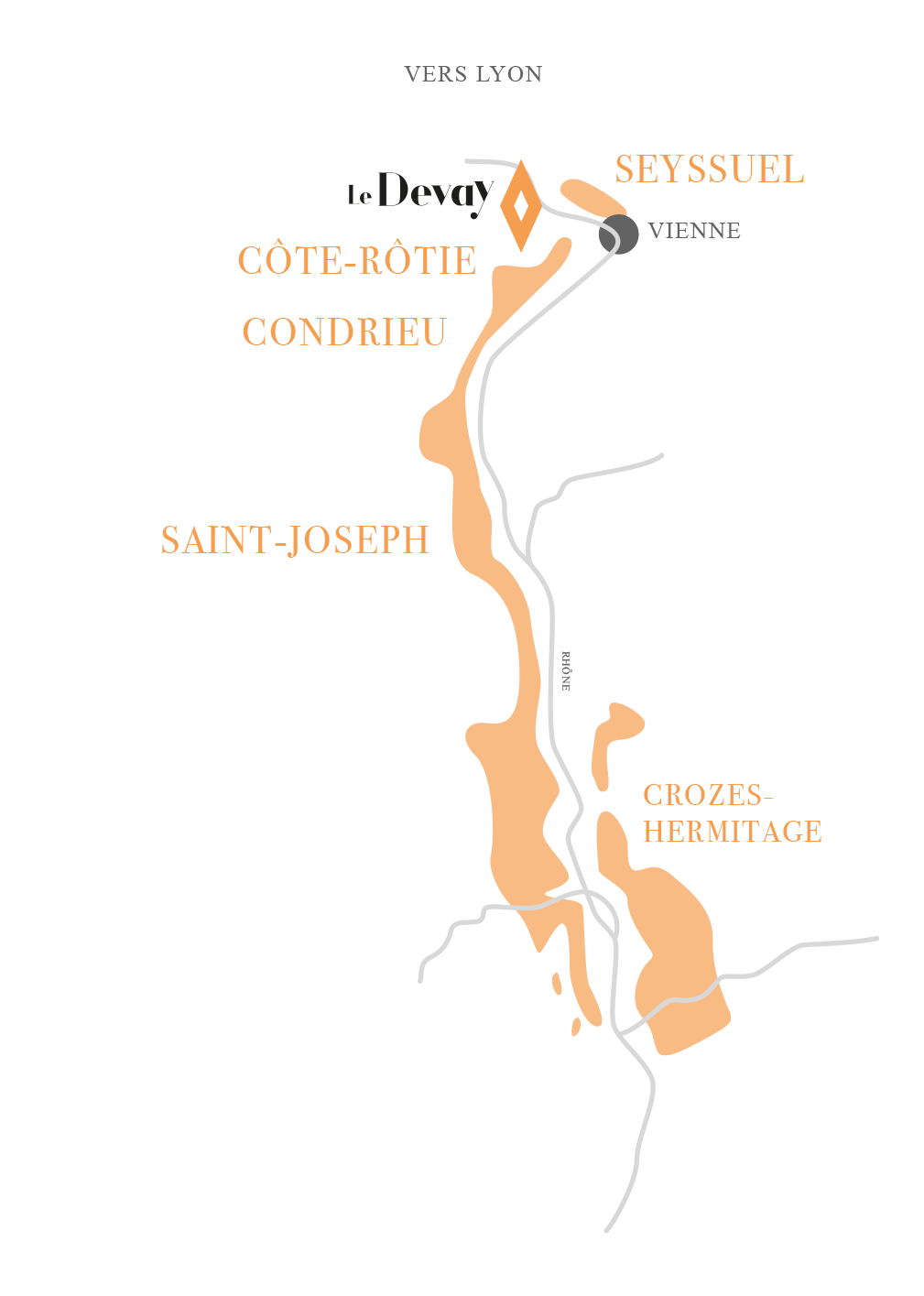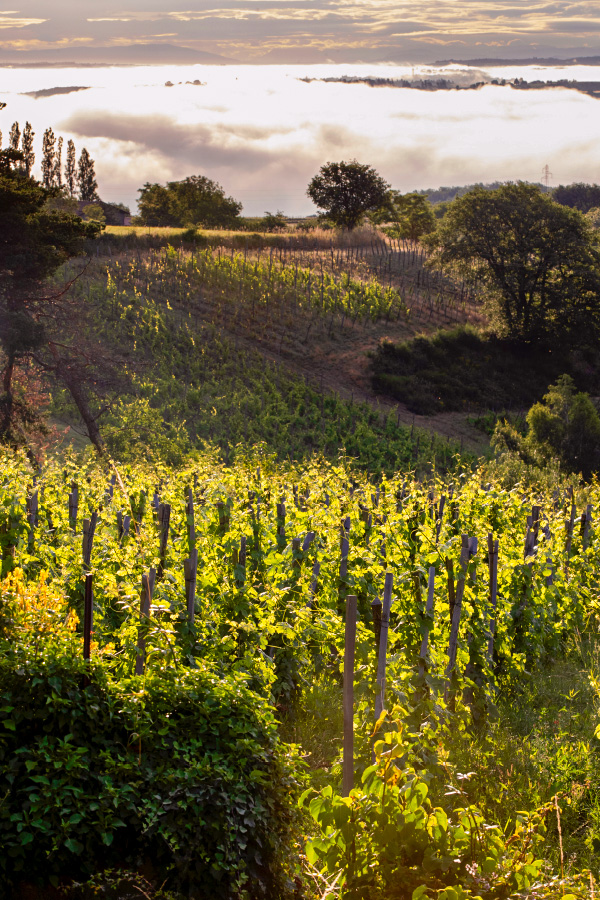
The
Estate

Once upon a time…
A family adventure, forgotten schist terroirs on the edge of Vienne, a landscape sculpted by hand, a vineyard managed with agroforestry and permaculture, and wines of a new era, forged by the strength of these arid hillsides and the passion of two tenacious dreamers, Jean-Charles and Florence Fournet.
“It is in a preserved natural environment that we have given life to this forgotten terroir on the borders of Vienne. A few hectares cleared, within a natural amphitheater of woods and forests. And the joy of working by hand and biodynamically these schist soils, rough and brittle, which yield wines on these high-altitude hillsides that are always fresher and more vibrant than elsewhere.”
Jean-Charles and Florence Fournet
Chapter 1
Since 2018, its first vintage, Château Le Devay has asserted itself on this Rhone land island, situated on the borders of Condrieu and Côte Rôtie. With all the energy and care of newly trained artisans, Jean-Charles and Florence Fournet have forged a family project there, alongside their respective activities, and breathed new life into this secluded property, formerly an ecclesiastical vineyard and agricultural farm.
Since then, they have pursued a human, sensitive, and passionate adventure with enthusiasm and optimism. With the simple idea of producing wines that reflect them, imbued with grace and character. Now, every morning, when they open their shutters facing east, it is no longer a carpet of woods and peaks touching the horizon and blending with the sky, but a plot of vines on stakes, intertwined in summer, leaving their wood bare in winter, stretching beneath their feet and offering itself to their gaze.
On this small island of freshly bloomed vines surrounding their home, they have built their happiness. A few hectares to produce white and red wine, under the IGP Collines Rhodaniennes.

A
family
adventure
It is a family story, born near Vienne in 2004. More precisely, on the heights of Saint-Romain-en-Gal, just a few kilometers north of the last Côte-Rôtie plots. A large country house, surrounded by fallow land, woods, and forests overlooking the Rhône. Jean-Charles Fournet, a radiologist, and Florence Fournet, a speech therapist, settled there and undertook the renovation of the buildings. This 18th-century property, formerly a resting house for the Archbishop of Vienne, is surrounded by numerous agricultural buildings and 22 hectares of land, the cadastre of which attests to the past presence of vines.
The Fournet family took possession of the premises and integrated perfectly into this wine region, forming friendships with many winemakers from neighboring appellations, notably Côte Rôtie and Condrieu.
Their respective activities did not leave them indifferent to the profession of winemaker, and from tastings at fairs, to cellar visits, to an intimate understanding of the vineyard, they became enthusiasts, and even more than that. Every day, when they open their shutters and look towards the Alps, where on a clear day, the silhouette of Mont Blanc can be seen, they think of what their friend Pierre-Jean Villa, a winemaker in Condrieu and Côte Rôtie, once told them: that their fallow lands are a formidable nursery for vines, an unsuspected terroir for planting Roussanne, Viognier, and Syrah. It is a colossal undertaking, but little by little, the idea of bringing the property back into cultivation gained ground…
In 2014, the decision was made. There would indeed be vines at Devay, and one day, a first vintage would be born. The family and collective odyssey began.
A Terroir Blessed by the Gods
These are hillsides that plunge into the valley, all around the property, curving the landscape with their steep slopes. Metamorphic rocks of the schist and micaschist type form the majority of the surface; these are the same soils found a little further on, on the slopes of Côte Rôtie. This forgotten terroir, on the edge of Vienne, facing Seyssuel, is indeed only two kilometers from the queen appellation. “On these intact soils, preserved from any intensive practice, one can still taste the tension, the minerality, the ruggedness, and the saline intensity of the schists.” In this preserved amphitheater bordered by woods and encircled only by an ordered nature limited by the river flowing below, calm and wonder persist.
“We are alone in the middle of the woods! The ideal environment for practicing agroforestry and biodynamics.”


On these hillsides, well-exposed to the east and south, the schist and micaschist formations provide a particularly interesting foundation for vine cultivation. As an extension of the Côte Rôtie terroir, this small, secluded island constitutes excellent vine land. That is why the opportunity was too good to let slip away! Pierre-Jean Villa, a winemaker in Condrieu and Côte Rôtie, immediately recognized its potential. As a benevolent expert, he advised and accompanied the Fournets throughout their project and continues to provide his support at every stage of their wine production, whether in the vineyard or in the cellar.
